Do (poonah) paper making is an old-time craft handed down from one generation to the next of the Muong in Hoa Binh Province. Visiting Suoi Co Village, one can learn how to make do paper through a project to restore this original craft in this northern mountainous province.
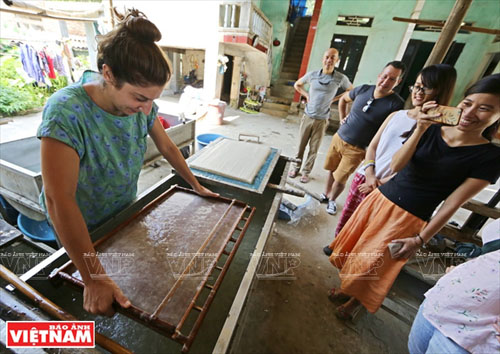
Stephanie Martinelli from the US learns how to acquire the paper fibers
With a passionate love for do paper, the material used to make Viet Nam’s popular folk paintings Dong Ho, Tran Hong Nhung and her team started the Zo Project in 2013 with a desire to preserve and restore this traditional craft which is suffering due to the lack of market outlets.
The Zo Project creates a chance for people to discover the process of producing do paper by organising tours on weekends to Suoi Co (grass spring), a village in Hoa Binh Province which has a longstanding tradition for making do paper.
Stopping our car outside the village and walking along a clear spring running through Suoi Co, we reached a small establishment making do paper where ten men were working. Receiving us with his hospitality and friendliness, artisan Nguyen Van Chuc, head of the establishment, explained in detail all the stages of producing do paper from the bark of the Rhamnoneuron balansae plant.
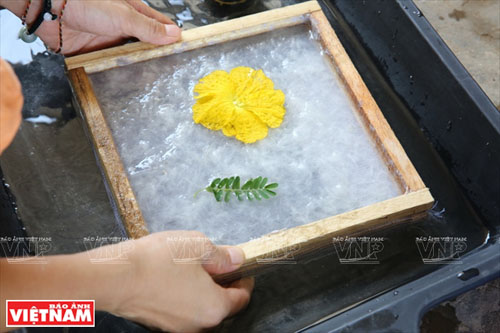
A new do paper product made by artisans of Suoi Co Village
First, the bark is soaked in lime water for three months. After that, the black outer bark is husked off and ground by mortar and pestle before being blended with a viscous substance made from a plant in the Verbenaceae family. This mixture is then diluted to form a syrupy liquid which is poured into a vat. A bamboo mold (liem xeo) is dipped into this vat and taken out. Paper fibers adherent to the mold in a thin sheet will become do paper after being pressed, dried, rolled, and dried again. The final product must be soft, light, and durable.
As do paper is made with bamboo and wood tools and is dried by natural light, it contains no acid and thus is durable for 500 years. Due to its durability, this paper is used in making books, paintings and documents, including ordainments of the kings.
After learning about the stages of making do paper, we were introduced by Zo Project staff on how to make new products from do paper such as decorative items.
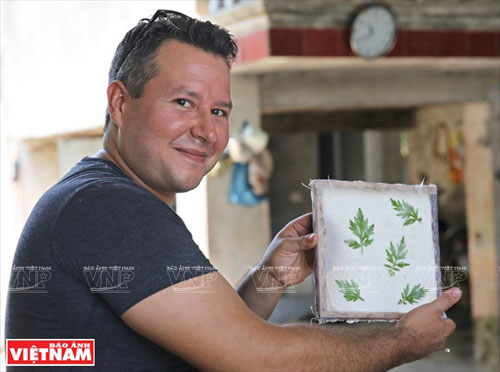
Javier Rodriguez from the US finishes the do paper product himself
Javier Rodriguer from the US, one of our companions on the trip to Suoi Co, who has lived in Viet Nam for five years, said he had an interesting experience making this special paper by himself, which he could never had in the US. The trip also gave him a chance to explore the life of locals here.
The one-day tour to Suoi Co village is truly a lovely present for visitors from local artisans who, with their skillful hands, create a unique product imbued with the identity of Viet Nam.
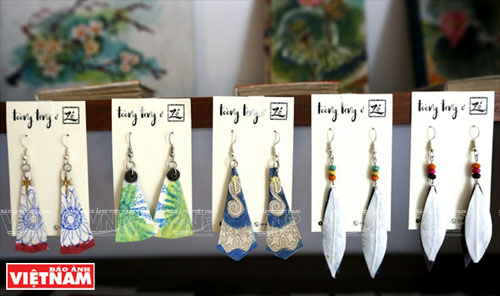
Earrings made from do paper
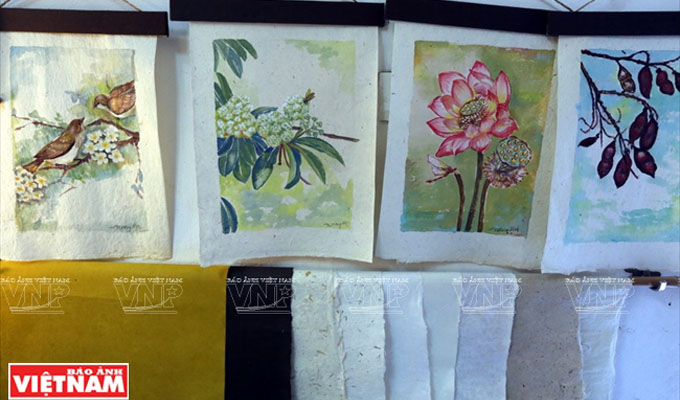
Paintings on do paper
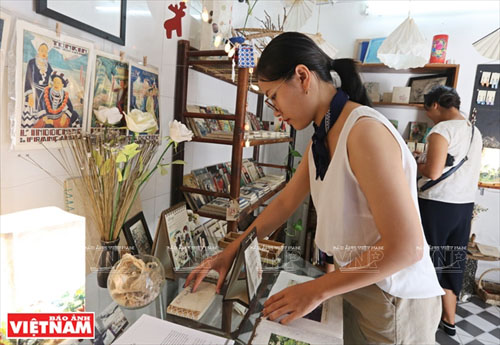
Visiting the Ha Noi-based showroom for do paper products made by Suoi Co villagers under the Zo Project